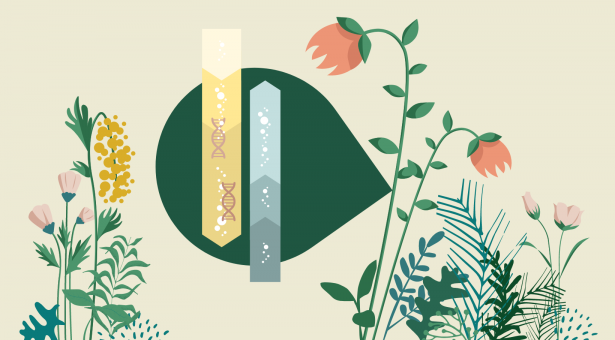A day trip through phloem

Franziska Hoerbst is a Computational System Biology PhD student in Richard Morris lab.
In PLAMORF, a collaboration between the research groups of Julia Kehr (University of Hamburg, Germany), Friedrich Kragler (Max Planck Institute for Molecular Physiology, Golm, Germany) and Richard Morris, Franziska focusses on the physicochemical properties of mRNAs and their influence on travelling.
We asked her how and why mRNA travel?
“In the human body, the vascular system permits blood and lymph fluid to circulate between the feet, brain, hands, heart and lungs.
The body’s vascular system is responsible for distributing oxygen, nutrients, immune cells, hormones and, therefore, transporting energy, building blocks and signals.
In addition, we have a second communication platform; the nervous system communicating high speed information from head to toe.
But how are energy and information transported in plants, where no heart pumps blood and no brain organises what’s going on?
Vascular plants also have a transport system carrying fluid through the organism. This pipe network connects roots, stem, leaves and flowers to transport water and nutrients.
Much like the arteries and veins in our bodies, these plants have xylem and phloem.
In xylem-pipes, water and minerals taken up from the soil, are transported from root to shoot.
In their phloem counterparts, sugars – which have been produced during photosynthesis – are transported to wherever they’re needed in the plant.
Biology would not be biology, however, without this system having additional levels of complexity… Contrary to prior belief, you can find far more molecules floating around in the phloem than just sugars and water.
If you take a closer look at the phloem sap, you’ll find proteins and phytohormones travelling around in there. And: RNA. More precisely: mRNAs.
This might not surprise you at the first glance. RNA is a biomolecule, why shouldn’t it hang out in phloem?
Let’s take a step back and think about the purpose of mRNA.
In the central dogma of molecular biology, the roles of biological macromolecules storing information are split in the following way:
- DNA is THE LIBRARY. It’s a mass storage in the nucleus and saves the information regarding how to build proteins
- RNA is THE CONSTRUCTION MANUAL. Through transcription of small parts of the DNA, like copying a page of a book, you get the recipes for proteins. These can be carried to the sites of protein construction
- Proteins are THE MACHINES. By linking amino acid to amino acid to amino acid to amino acid you can form a chain of different types of them, building a protein. These macromolecules can be huge and act like molecular machines performing diverse tasks needed in a cell
Coming back to phloem, through which these building instructions and machines have been observed to travel. Why are they doing so? Shouldn’t they stay in the cell and carry out the task they are made for?
Thanks to the massive amount of progress in the field of molecular biology we are now able to read these RNA ‘instruction manuals’. We now know which copied pages of the library are floating around in phloem.
Unfortunately, however, the RNAs don’t have a big flashing sign giving information about their sender, mission or destination, which raises many questions.
Which macromolecules are travelling? What makes a molecule travel? Is there something written in the instruction manual that says: ‘Please, give me a ride to the doors of the cell, I want to take a day trip through phloem…’?
In addition to mRNAs, proteins and other kinds of RNAs (siRNAs, miRNAs, tRNAs) have been observed in phloem.
It has been shown that proteins and small RNAs (not including mRNAs) transmit signals in plants. So, why are mRNAs travelling then?
Maybe mRNAs form a secret code saying things like: ‘Spreading the word: spring begins’ or ‘Nutrient deficiency in roots, please send help’. This would be analogous to hormones in humans, or the signals conveyed by proteins.
While this idea involves a selection for exiting a cell, it’s also possible that mRNAs just leak out of cells, without any hidden messages.
To sum up, macromolecular travelling is still some kind of a mystery. And if there is something strange … Who you gonna call? PLAMORF consortium.
The consortium is formed to unite experts in the field of cell biology and cellular transport in order to understand the travelling processes of macromolecular biomolecules.
Long-distance signalling is an exciting field in plant molecular biology with the potential to contribute valuable knowledge to face upcoming challenges related to feeding the world.
PLAMORF’s vision is to ask all these questions from the point of a biochemist and a structural biologist (Group Kehr), a plant physiologist (Group Kragler) and a computational scientist (Group Morris) and combine all views to an encompassing picture of the mystery behind the molecule movements.



